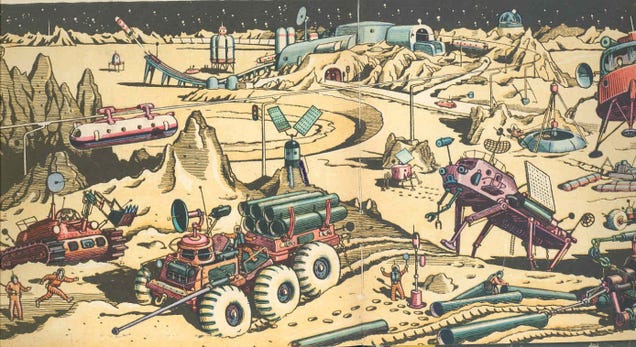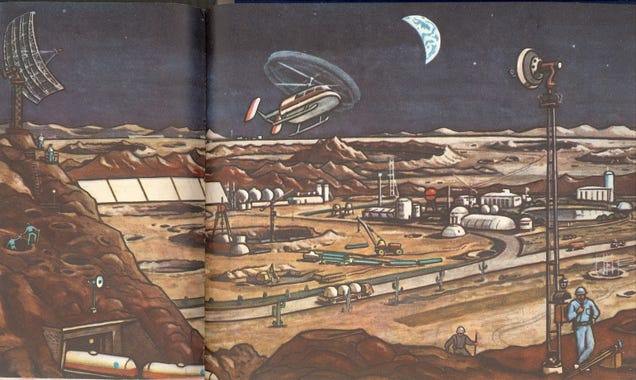“Spirit of Berlin” a short color film with historic footage showing everyday life in the German capital in July 1945 — just two months after the end of the war.
Category: World Civ-Cold War in West
'They raped every German female from eight to 80'
“Red Army soldiers don’t believe in ‘individual liaisons’ with German women,” wrote the playwright Zakhar Agranenko in his diary when serving as an officer of marine infantry in East Prussia. “Nine, ten, twelve men at a time – they rape them on a collective basis.”
The Soviet armies advancing into East Prussia in January 1945, in huge, long columns, were an extraordinary mixture of modern and medieval: tank troops in padded black helmets, Cossack cavalrymen on shaggy mounts with loot strapped to the saddle, lend-lease Studebakers and Dodges towing light field guns, and then a second echelon in horse-drawn carts. The variety of character among the soldiers was almost as great as that of their military equipment. There were freebooters who drank and raped quite shamelessly, and there were idealistic, austere communists and members of the intelligentsia appalled by such behaviour.
Read more from this excerpt of Anthony Beevor’s new book at the Guardain
How David Bowie became the loathed adversary of a Soviet-era youth movement
Among a certain set of Soviet citizens, Bowie became notorious as the immaculately fashionable foe of the artists collective and aspiring youth-movement masterminds known as Mitki…
Given the humble boiler room beginnings of the Mitki movement, it’s not surprising that overarching rejection of Western glamor is a central tenet of the group’s idiosyncratic philosophy. Exactly how Bowie was chosen as the principal representative of this glamor is a more complicated question
Lazar's Lecture on The Stalin Years
Lecture Outline:
- Brief note on origins
- Stalin’s Inheritance & His Plans
- Mixed Industrial Results
- Mixed Agricultural Results
- Raw Terror
- Foreign Policies
- Stalin’s Legacy
Stalin: The Hero who Preserved the Revolution or the Villain who Destroyed it? Enjoy.
Explanation of Stalin's purges
Stalin's Cult of Personality
How Warner Bros. Animators Responded to the Cold War (1948-1980)
Warner Bros. animators, under the leadership of Charles M. “Chuck” Jones, launched their own, albeit mild, counter attack when they introduced Marvin the Martian in 1948, several years before The Manchurian Candidate (1962), Fail Safe (1964), Seven Days in May (1964), Dr. Strangelove (1964), or Boris and Natasha, the Russian spies in the Rocky and Bullwinkle cartoons of the late 1950s and early 1960s.
Our dangerous new McCarthyism: Russia, Noam Chomsky and what the media’s not telling you about the new Cold War
It is time to attempt that hardest of things—to see ourselves for who we are, to see what it is we are doing and what is being done to us.
…Two, there can be no Cold War II because the Cold War as we knew it never ended.
The FBI files on being and nothingness
The irony that emerges from the FBI files on Camus and Sartre, spanning several decades is that the G-men, initially so anti-philosophical, find themselves reluctantly philosophizing. They become (in GK Chesterton’s phrase) philosophical policemen.
Hoover needed to know if Existentialism and Absurdism were some kind of front for Communism. To him, everything was potentially a coded re-write of the Communist Manifesto. That was the thing about the Manifesto—it was not manifest: more often it was, as Freud would say, latent. Thus FBI agents were forced to become psychoanalysts and hermeneuts…Thus we find intelligence agents studying scholarly works and attending lectures.
But the FBI were “philosophical policemen” in a second sense: in tracking Camus and Sartre (surveillance, eavesdropping, wiretapping, theft) they give expression to their own brand of philosophical investigations. In particular, the FBI philosophy files reveal how the agency became so dogmatically anti-conspiratorial.
Five Myths About the Cold War
Mark Kramer is director of Cold War Studies and a senior fellow at Harvard University’s Davis Center. More than 20 years since the U.S.S.R. disappeared, Russia’s incursion into Ukraine is renewing old rivalries and sparking talk of a new Cold War, with former KGB officer Vladimir Putin serving as the West’s latest foil in Moscow. But how apt is the comparison?
Let’s examine some myths that endure about the East-West stalemate.
Almost Everything in “Dr. Strangelove” Was True
Despite public assurances that everything was fully under control, in the winter of 1964, while “Dr. Strangelove” was playing in theatres and being condemned as Soviet propaganda, there was nothing toprevent an American bomber crew or missile launch crew from using their weapons against the Soviets.Kubrick had researched the subject for years, consulted experts, and worked closely with a former R.A.F.pilot, Peter George, on the screenplay of the film. George’s novel about the risk of accidental nuclear war,“Red Alert,” was the source for most of “Strangelove” ’s plot.
Unbeknownst to both Kubrick and George, atop official at the Department of Defense had already sent a copy of “Red Alert” to every member of the Pentagon’s Scientific Advisory Committee for Ballistic Missiles. At the Pentagon, the book was taken seriously as a cautionary tale about what might go wrong. Even Secretary of Defense Robert S. McNamara privately worried that an accident, a mistake, or a rogue American officer could start a nuclear war.”
This New Yorker article explores the film as fact.,
Hitler vs. Stalin
Assessing the most recent scholarship, this article from the NY Times Review of Books compares the casualty counts resultant from the Hitler and Stalin regimes.
How the CIA secretly published Dr Zhivago
Boris Pasternak’s famous novel Doctor Zhivago remained unpublished in the USSR until 1988, because of its implicit criticism of the Soviet system. But for the same reason, the CIA wanted Soviets to read the book, and arranged the first-ever publication in Russian.
How Soviet Artists Imagined Communist Life in Space
Artists from the Soviet Union didn’t just imagine a worker’s Utopia on Earth. They also thought that the great communist experiment would eventually reach other worlds, too. Here are some incredible works of art and conceptual design that put the Soviet Union in space.
 SEXPAND
SEXPAND
 AND
AND
ATOMIC SECRETS, MISSING PERSONS AND GENERAL COLD WAR STRANGENESS
The Conelrad Blog is awesome…and disturbing
How children's books thrived under Stalin
When Stalin’s great purges made writing dangerous, a group of avant garde artists turned their attention to children’s books. Philip Pullman on a new collection that reveals a vigorous freedom in a time of repression.
Partly because of such collaborations, and partly because children’s books provided a hiding place for a while, the early Soviet period was a miraculously rich time for children’s books and their illustration. A new book, Inside the Rainbow: Russian Children’s Literature 1920-1935 offers a glimpse into that astonishing world. The designer, Julian Rothenstein, and the writer of an essay in the book, Olga Budashevskaya, have produced something truly remarkable. Brilliant primary colours, simple geometrical shapes
NPR Interview: Kinzer on the Dulles Brothers
In 1953, for the first and only time in history, two brothers were appointed to head the overt and covert sides of American foreign policy. President Dwight Eisenhower appointed John Foster Dulles secretary of state, and Allen Dulles director of the CIA.
Journalist Stephen Kinzer says the Dulles brothers shaped America’s standoff with the Soviet Union, led the U.S. into war in Vietnam, and helped topple governments they thought unfriendly to American interests in Guatemala, Iran, the Congo and Indonesia. In his new book, The Brothers, Kinzer says the Dulles’ actions “helped set off some of the world’s most profound long-term crises.”
John Dulles died in 1959. President Kennedy replaced Allen Dulles after the covert operation he recommended to overthrow Fidel Castro in Cuba ended disastrously in the 1961 Bay of Pigs invasion.
Kinzer tells Fresh Air‘s Terry Gross that the Dulles’ shared background and ideology played out in their policy decisions: “They had this view of the world that was implanted in them from a very young age,” Kinzer says. “That there’s good and evil, and it’s the obligation of the good people to go out into the world and destroy the evil ones.”
BBC Great Lives: Hitches on Trotsky
A fight ensues. Fun radio!
How a blunder finished off the Wal
The intention was to announce the changes overnight and phase in the new rules the next morning. Instead one of the Politburo members, Guenter Schabowski, blurted out the plans during a televised press conference – and compounded his error by adding the new rules would come into force “immediately”.
Live press conferences were a novelty in communist days, and Mr Schabowski was becoming something of a celebrity through his appearances. Mr Modrow is still scathing about Mr Schabowski’s preening in front of the media.
“The order wasn’t to be published until 0400 in the morning. But Mr Schabowski didn’t notice. He went into an international press conference. And he was so arrogant and full of himself. We had no idea this was happening.”
Russian History Blog
Great Russian History Blog supported by the Center for History and New Media and the Center for Eurasian Studies at George Mason University.
